In the Media
Financial Aid Letters Often Hide the Real Cost of College
June 5, 2018
By Alvin Chang

Every year, millions of students receive college acceptance letters. The inevitable question that follows for many of them: Can I afford this?
That’s why the subsequent financial aid letter is so important. Ultimately, it tells them how much college will cost.
Over the past few years, staffers from uAspire, an organization that helps low-income students get to college, have helped low-income students parse through their aid letters. What they found is a problem that plagues the entire financial aid process: the letters that explain whether a student will get financial aid, and how much, are incredibly complex and hard to understand.
“It needs advanced interpretation,” uAspire chief policy officer Laura Keane said.
Researchers from uAspire, with help from New America, analyzed 515 financial aid letters to understand just how widespread this problem is. They found that financial aid letters are consistently misleading and confusing.
If you don’t believe it, just try to decode the letters below — actual letters from actual colleges — and answer some simple questions:
- How much money in aid is the institution giving the student?
- How much money can the student receive in loans?
- What will be the net cost for the student?
Here’s a letter from Fitchburg State University in Massachusetts:
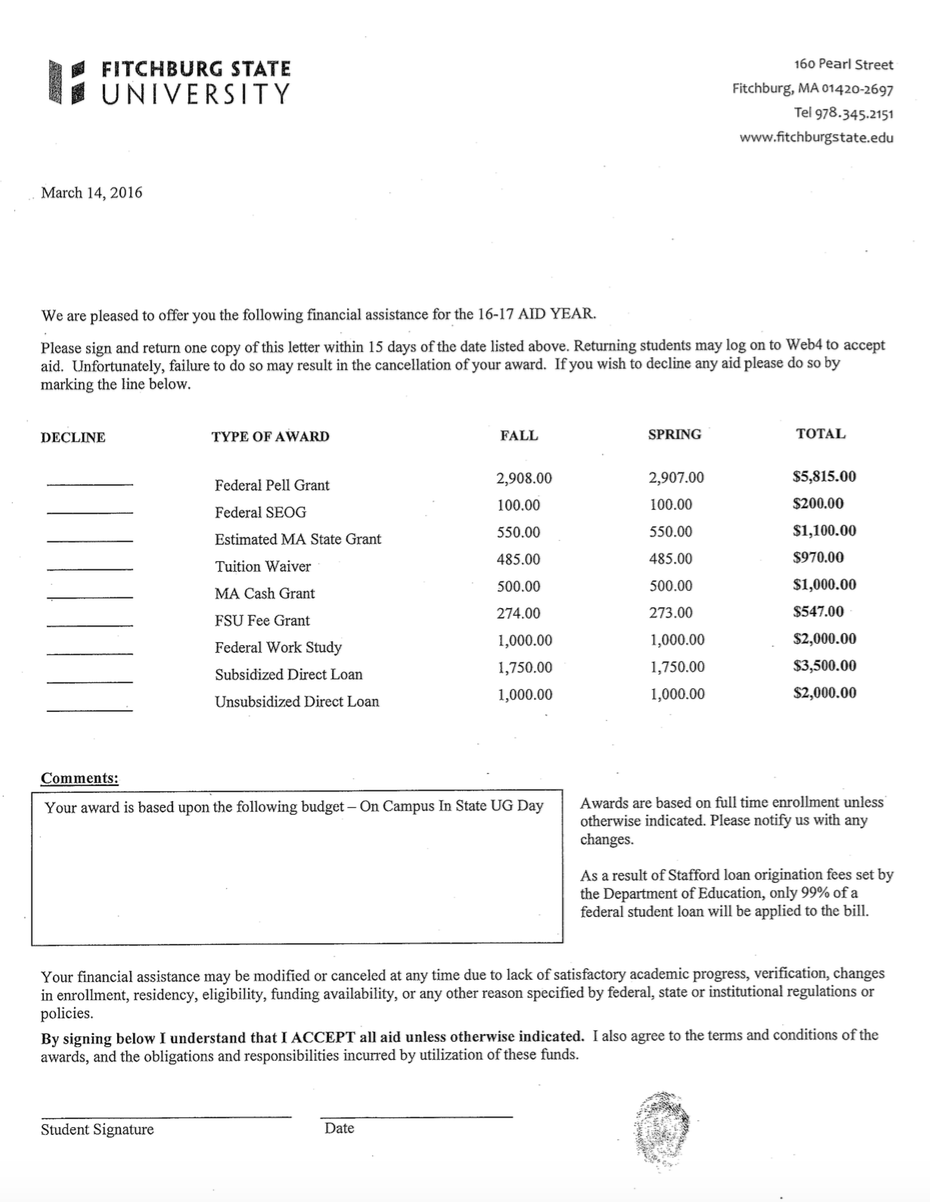
Here’s one from Merrimack College, also in Massachusetts:
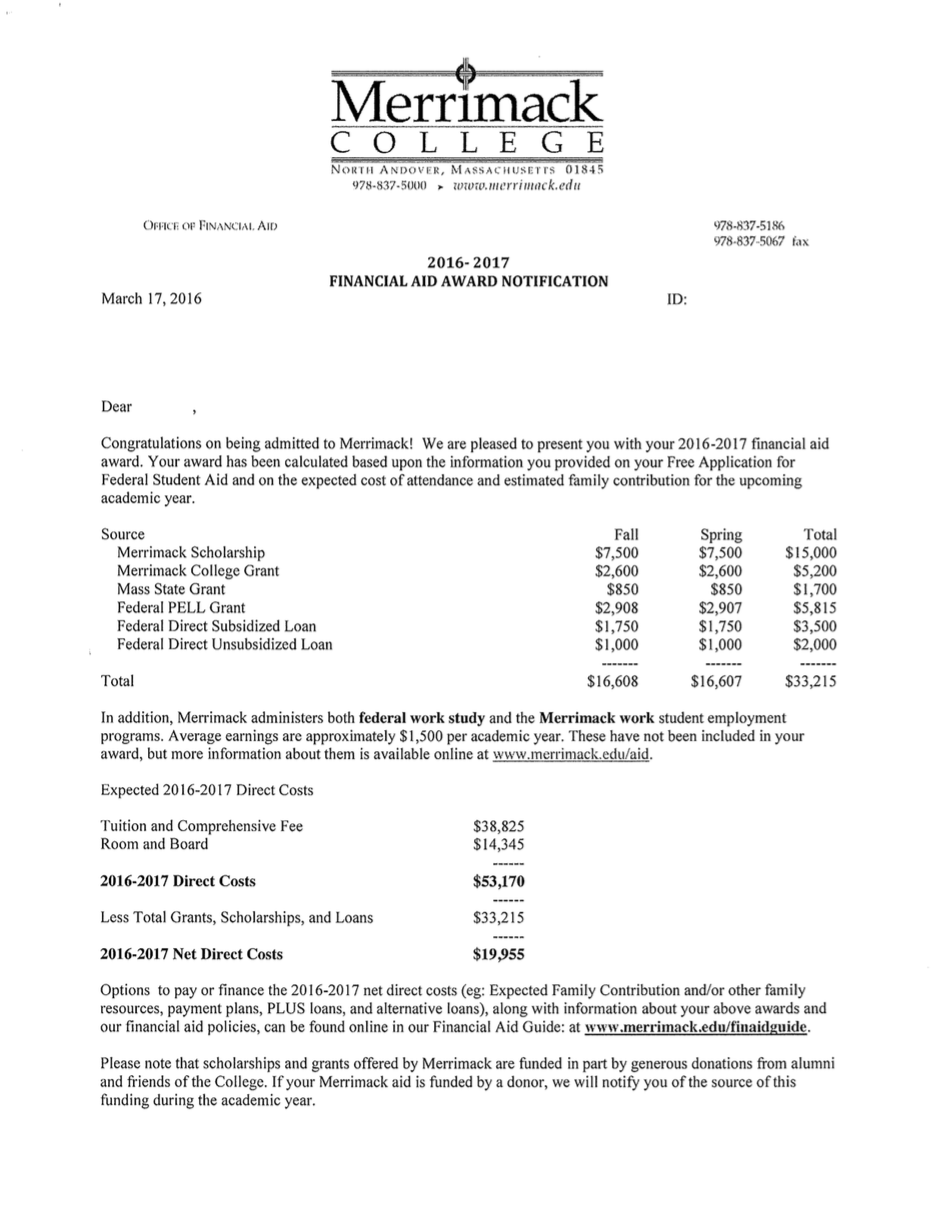
And here’s one from Pace University in New York:
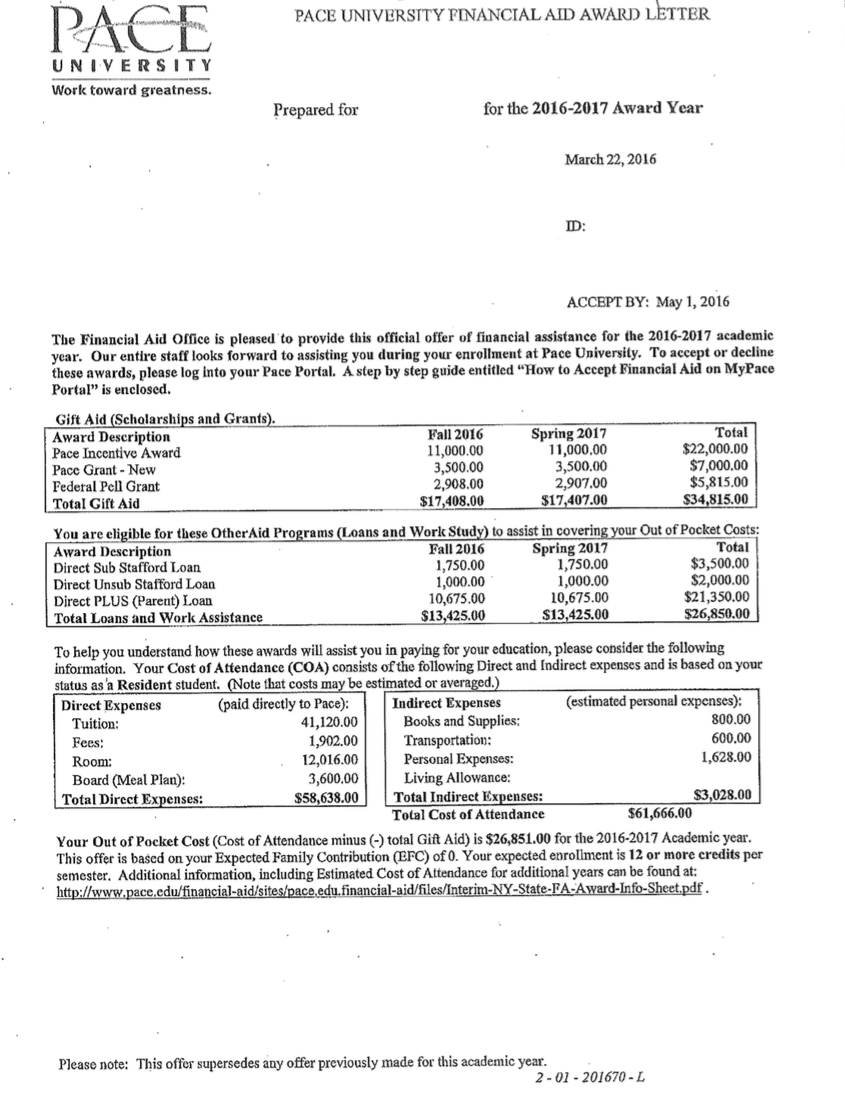
Scroll to the bottom of this story for a translation of what these letters actually say.
These schools aren’t just cherry-picked examples. The researchers found most colleges in their sample were astoundingly bad at telling students how much the actual cost of attendance would actually be.
Only about 40 percent of colleges in the study told students how much they’d need to pay — and even then, schools had different ways of calculating that amount, which made it difficult to compare costs.
“Students are purchasing something, and they don’t know how much it costs,” Keane said.
Colleges have been resistant to making aid letters clearer
In 2012, the US Department of Education released a template called a “Shopping Sheet,” which schools could follow to provide a clearer, more consistent format for their aid letters.
Here’s what the Shopping Sheet looks like:
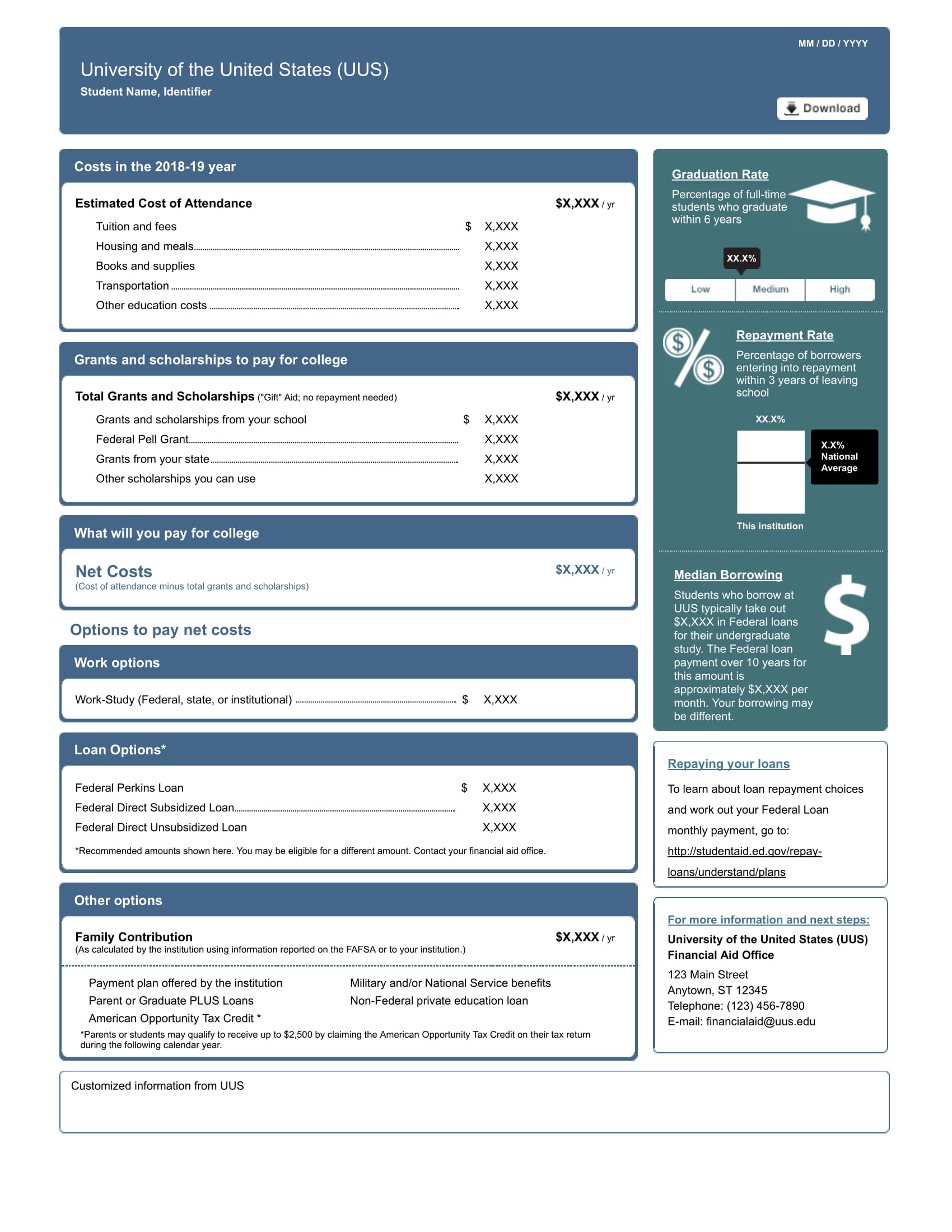
But some schools wants to be able to control their own aid letters, so the National Association of Student Financial Aid Administrators, or NASFAA, came up with a “code of conduct” for its member schools to meet a certain standard of clarity.
The report found that fewer than half of colleges receiving federal funds use the Shopping Sheet, and the majority of schools don’t follow the NASFAA code of conduct.
To put it more tangibly, the researchers looked at financial aid letters from 455 schools and found that 70 percent of them failed to say how different kinds of aid worked. For example, a scholarship or grant doesn’t have to be paid back; a loan does. But these aid letters often lumped them all into the same bucket. For example, here’s a letter from Bridgewater State University in Massachusetts:
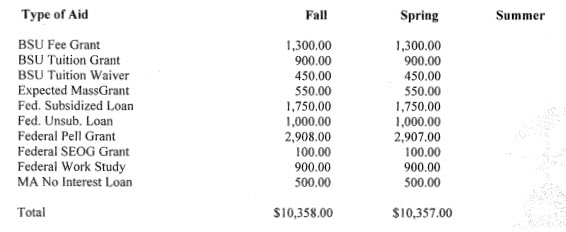.png?lang=en-US)
Here’s a letter from the University of Arizona, which makes it seem like the student has received a full-ride scholarship. In reality, a huge portion of the aid is loans.

It’d be one thing if there were consistent terminology for various type of aid. But the report found that these 455 schools found 136 ways to describe an unsubsidized student loan — and 24 of them didn’t even use the word “loan.”
For example, here’s a letter from Texas Southern University. It never actually uses the word “loan,” though there’s clearly space for it:
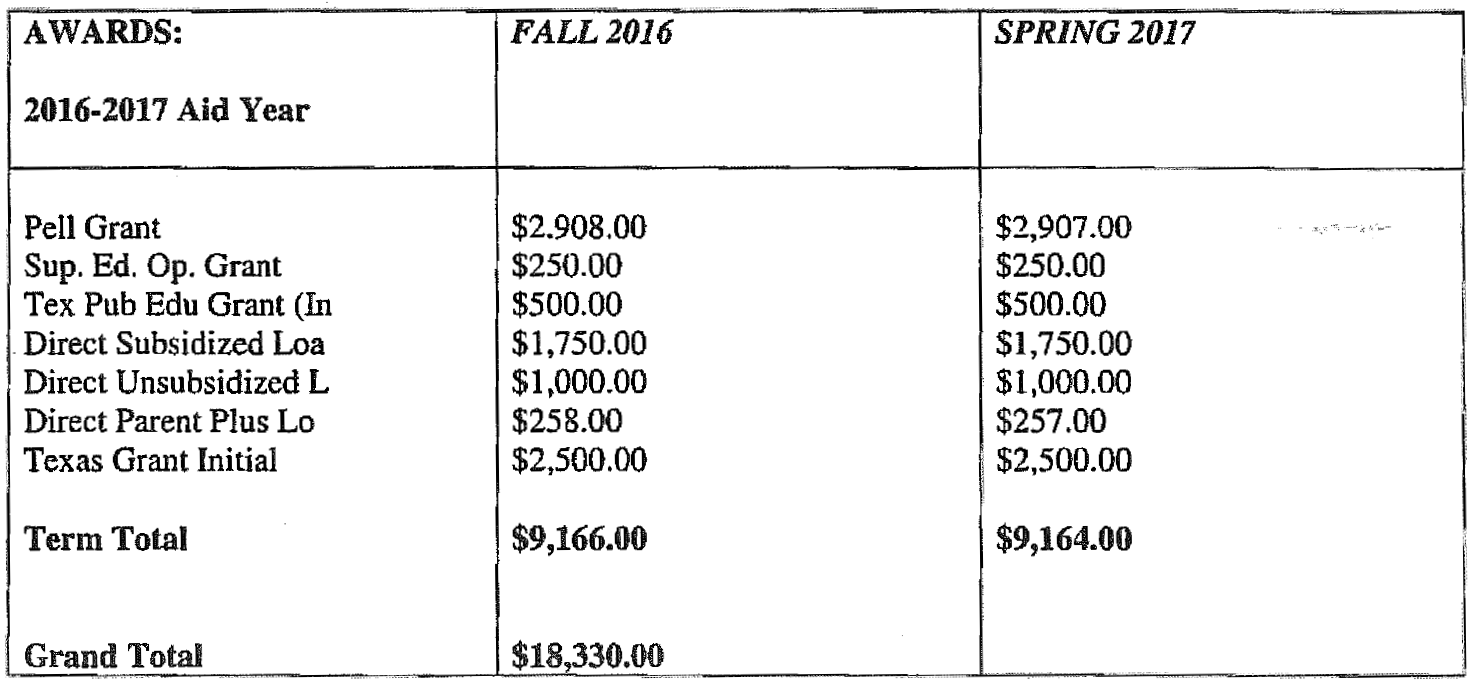
Some schools had financial aid letters that made clear what each piece of aid was. Here’s one from the University of California Merced:
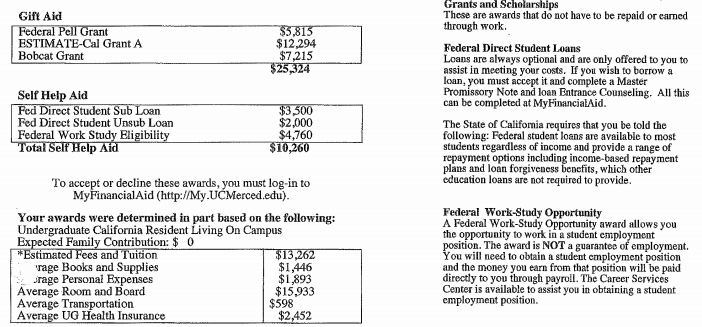.png?lang=en-US)
Even if these letters were clear, low-income students aren’t getting enough aid
The researchers found that, on average, low-income students were being asked to shoulder about one-third of the cost of attending college. Given the rising cost of the sticker price, that amount is prohibitive for many families.
On top of that, colleges aren’t being clear about these financial realities.
“We hear a lot about students filling out the FAFSA or that financial aid doesn’t meet their need. But there’s less scrutiny on the actual rewarding process,” said Rachel Fishman, one of the report’s authors.
Fishman said sometimes it’s because schools are oblivious that students don’t understand financial aid terminology. Other times, it’s part of an “enrollment management” tactic, clearly trying to lure students by making their school seem more affordable than it actually is.
There appears to be bipartisan support to create federal guidelines for this letter. Last year, Sen. Chuck Grassley (R-IA) and then-Sen. Al Franken (D-MN) reintroduced a bill that would clarify the cost of college to students. “The financial aid award letter they receive from one school might be a lot different than one from another school. As a result, students have a very hard time determining which school is the most economical choice,” said Grassley.
And earlier this year, the US Senate Committee on Help, Education, Labor, and Pensions held a hearing on making the financial aid system more simple and transparent. Part of the discussion was about simplifying the financial aid letter.
The efforts appear to have gotten lost in the partisan drama over the reauthorization of the Higher Education Act.
For Keane, creating federal guidelines for these letters is just a commonsense reform. “Students are just trying to figure out: What does it cost? What do I pay now, what can I pay later? What do I need to come up with?”
Answers
Fitchburg State University: This letter does a poor job separating out grants and scholarships — which don’t have to be paid back — from loans and work study. In addition, there is no information about the cost of attendance, making it difficult to understand what the net cost would be. (The cost of attendance was $22,905 in the 2016-’17 school year.)
- Gifts: $9,632
- Loans: $5,500
- Work study: $2,000
- Net cost: Not enough information from the form
Merrimack College: This letter also does a poor job separating out grants and scholarships. It does, however, list the direct cost of attendance — money paid to the school, like tuition, fees, room, and board. It doesn’t include indirect costs, like books, transportation, and personal costs.
- Gifts: $27,715
- Loans: $5,500
- Net cost: $25,455 (but does not include indirect costs)
Pace University: This letter does a good job separating out scholarships and grants from loans. In addition, it includes both indirect and direct expenses. However, it includes something called a “Direct PLUS (Parent) loan,” which means it’s not a student loan but instead a loan your parents need to take out — but it doesn’t actually spell this out on the letter. (A reader pointed out that it also says the “Expected Family Contribution” is $0, even when it includes a parent loan.)
- Gifts: $34,815
- Loans: $26,850 (includes a PLUS parent loan)
- Net cost: $26,851
(Thanks to New America’s Kim Dancy and Ben Barrett for checking — and correcting — my attempt to decode the letters. Yes, I was having trouble parsing some of these.)